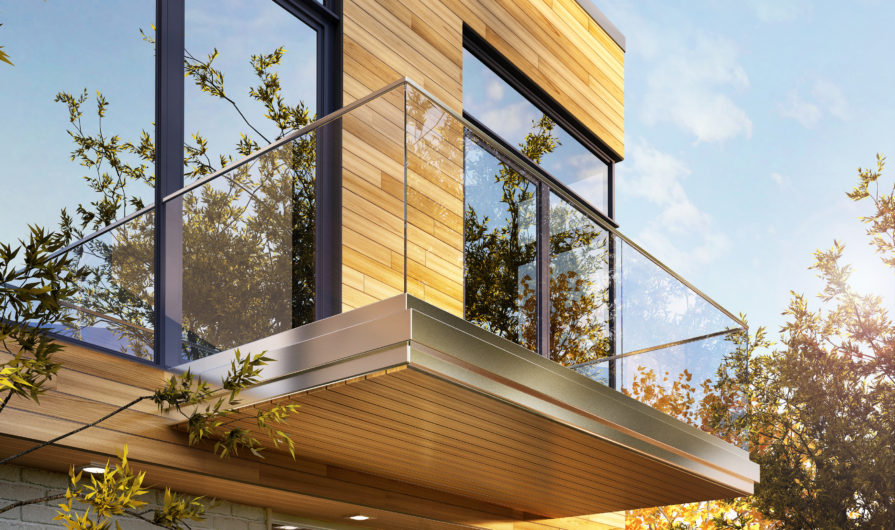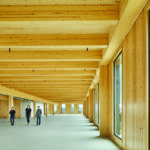Co-authored by Wood Preservation Canada and the Western Wood Preservers Institute
What do houses, transportation and electricity have in common? Preserved wood products.
From decks and industrial poles to bridges and railway ties, the beauty and sustainability of wood is enhanced by the science and application of preservatives. In a time when there is an increased emphasis on health and wellness, the word “preservative” should be viewed as aligning with this, rather than against it.
Preservatives that extend the life of wood products are regulated to ensure their safe use. In Canada, this regulation is overseen by Health Canada’s Pest Management Regulatory Agency (PMRA). In the U.S., this work is done through the Environmental Protection Agency (EPA).
The need to protect wood from deterioration dates back many millennia to efforts by the Egyptians and the Romans. Since the advent of pressure treating in the mid-19th century, there have been many advancements in preservatives and treatment processes that enhance the durability of one of the world’s oldest renewable building materials.
Preservatives extend the service life of wood products exposed to demanding conditions where there is higher risk for deterioration from insects and decay fungi. The treating process integrates the preservatives, which are mixed with an oil or water carrier, into the wood fiber to create a protective barrier. The built-in protection for the wood can extend its use from a few years to decades of long-lasting performance.
Once preservatives are approved for use, the PMRA and EPA monitor them through a series of education, compliance and enforcement programs. Preservatives also are reviewed every
15 years or sooner as new information is discovered and as science evolves.
Treating Plant Certification
Wood treating facility owners and operators share with all Canadians the responsibility of maintaining the integrity of our environment, now and for future generations. The Canadian Wood Preservation Certification Authority (CWPCA) was created to ensure that treating
plants maintain environmentally responsible practices in plant design and operation.
CWPCA-certified plants endorse a set of principles to govern their attitude and action in environmental matters, including a commitment to assess, plan, construct and operate facilities in compliance with all applicable environmental regulations.
The Question of Sustainability
In Canada and the U.S., trees ranging from 20 to 80 years old are harvested to be converted into wood products. If these products are exposed to the outdoor elements, it can take a few years before they begin to show signs of deterioration.
When the wood is pressure treated with preservatives, however, its life in service is extended from years to decades. In fact, in many uses, preserved wood can last as long as it takes to grow a tree large enough to become the resource for a replacement product.
This sustainability extends into the impacts of preserved wood on the environment compared to alternative materials. Internationally recognized Life Cycle Assessments (LCAs) identify preserved wood as having significantly lower impacts on the environment when compared to other building materials. These cradle-to-grave assessments show preserved wood products have lower energy and resource use, as well as lower impacts for key indicators such as greenhouse gas emissions, water and fossil fuel use, and ecotoxicity.
Are Preservatives Safe?
Both the PMRA and EPA determine whether proposed preservatives can be used safely. These government agencies require rigorous scientific evaluation on an ongoing basis to ensure the production and use of preserved wood products poses no significant harm to human health or the environment.
The ingredients in today’s preservatives can be found in a variety of consumer products used in everyday life. For wood products treated for residential use, the main ingredient in the preservative is soluble copper – the same copper that can be found in water pipes and cooking pans. The effectiveness of this copper is enhanced with the addition of cooperating biocides and fungicides; these include azoles, quaternaries and borates, which also are used in disinfectants, cleaning and eye care products.
It is important to understand how much preservative is used for any given application. The amount of preservative used in a product is called “retention” and is measured in pounds per cubic foot (pcf). A cubic foot of wood would be equivalent to a 12-ft.-long piece of 2×6 lumber. Treating that lumber for an above-ground application requires a retention of 0.06 pcf. That equates to one ounce of preservative for the entire piece of lumber. That same piece of lumber treated for a ground-contact application has a retention of 0.15, or 2.5 ounces of active preservative.
For products sold at retail locations, the preservatives, the retention and the use conditions are identified by a plastic end tag or stamp. The end tag also includes information on the company and location where the product was treated, as well as a mark from an independent third-party inspection agency which ensures the wood was produced to industry standards. In the U.S., the information required on the end tag is defined under the national building codes.
Fire-Retardant Treated Wood (FRTW)
In addition to preservatives, wood can be pressure treated with fire retardants to minimize the potential impacts from exposure to fire. Fire-retardants are intended to protect the wood from contributing to a fire and provide sufficient time for occupants of a structure to exit safely and for fire services to respond.
Fire-retardant formulations change the chemistry of the wood so that when it is heated, it gives off water and carbon dioxide, which slows or stops the spread of flames. Infused fire retardants dilute the flammable gases that are created when wood is heated and encourage charring, which insulates the wood below and slows the fire growth.
FRTW products are approved for use under North American building codes as an alternative to non-combustible materials in certain applications. These products often are used in multifamily and commercial structures for applications such as wall framing, floor assemblies and roof trusses.
A Rooted History
For centuries, North America has relied on the preserved wood product industry for the basic infrastructure that is essential for commerce and everyday life. Preserved wood products are used in a variety of applications that benefit people daily – industrial poles used for carrying power and communication services, goods transported by rail and dock facilities for all things shipped by water – with a rooted history of success in residential, commercial and industrial applications. Preserved wood products are, most likely, part of the deck where you spend summer days and the fence that surrounds your home. You can spot them in your backyard, along your street or at a marina. As they have been for more than two centuries, preserved wood products are here to stay.
Wood Preservation Canada
Wood Preservation Canada (WPC) is the industry association that represents the treated wood industry in Canada. WPC operates under Federal
Charter and serves as a forum for those concerned with all phases of the pressure-treated wood industry, including research, production, handling/use and the environment. WPC members are committed to producing safe, quality products in an environmentally sound and progressive manner.
Visit woodpreservation.ca to learn more.
Western Wood Preservers Institute
With headquarters in Vancouver, Washington, Western Wood Preservers Institute (WWPI) is a non-profit trade association founded in 1947. WWPI serves the interests of the preserved wood industry in the 16 Western states, Alberta, British Columbia and Mexico so that renewable resources exposed to the elements can maintain favorable use in aquatic, building, commercial and utility applications. WWPI works with federal, state and local agencies, as well as designers, contractors, utilities and other users over the entire preserved wood life cycle, ensuring that these products are used in a safe, responsible and environmentally friendly manner. Visit preservedwood.org to learn more.






